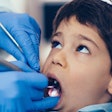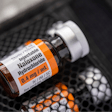
Critical to our work in dentistry is the education of the patient. Before we perform dental care, we must first obtain informed consent. Informed consent means that patients must have all the information about the pros and cons of the treatment so they can decide about care based on current knowledge. Their signature is evidence that they understand the procedure and the positives and most current negatives associated with the service.
The decision has ethical and legal consequences. Unfortunately, some practices forego the consent because they think it may scare the patient, especially when the negatives seldom happen. It also may lead to a patient giving an "informed refusal" after learning of possible adverse outcomes.
 James Anderson, DMD.
James Anderson, DMD.Whether informed consent or informed refusal is given, it is the patient's right to choose his or her destiny. Even though dental procedures are not as "life and death" at the moment as medical treatment, some can be threatening to the patient's health and well-being.
With the COVID-19 pandemic and the mandates given by the World Health Organization, the U.S. Centers for Disease Control and Prevention, and the ADA, dentists in most states had to reduce their services to providing only "emergency" or "urgent" procedures having to do with pain and infection.
We all have our own stories to share about what has happened since that time. Dental production related to the return of patients is still lower than prepandemic levels, and most dentists are doing all they can to bring their patients back and attract new patients. What I have found is that patients need to feel safe before they are open to having dental treatment.
Safety must be established before the informed consent, or the educational process will not work. If a patient turns down treatment after you have presented the plan and the information, it may be that the patient does not feel safe or confident enough to move forward. Address this concern upfront with patients, and don't wait for them to ask about your safety plan.
Creating 'safety' in your practice
Here are some steps you should take to create this safety in your practice:
- Have a stringent COVID-19 safety plan in place, train your staff, and have a safety quiz once a week.
- Include a copy of the safety plan on your office door, website, and social media page. Post updated content weekly about your practice's dedication to keeping everyone as safe as possible.
- Obtain cleanliness certification from eAssist Dental Solutions and display the certification in each treatment room and on the front door and website.
- Establish routine Occupational Safety and Health Administration (OSHA) training and updates for team members to feel confident that you are keeping them safe. Listen to them and do what they ask to keep them safe.
When the number of COVID-19 cases spikes across the U.S., we are all concerned with safety for ourselves and our staff, family, friends, and community. Preventive dental care and restorative care are essential to total health, and there is plenty of information to support this statement, yet we must prove that we can be a safe and accountable business.
Our job is to provide unparalleled safety, along with information and education for responsible dental care.
James Anderson, DMD, is a practicing dentist in Syracuse, UT, and is the CEO and founder of eAssist Dental Solutions. He can be reached via email.
The comments and observations expressed herein do not necessarily reflect the opinions of DrBicuspid.com, nor should they be construed as an endorsement or admonishment of any particular idea, vendor, or organization.



















